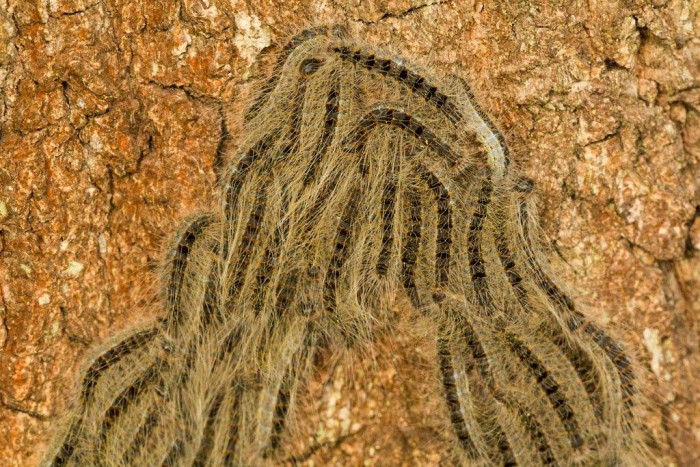An influx of toxic caterpillars has invaded Wimbledon Common – residents are now being warned to avoid touching the creatures’ poisonous hairs which can cause rashes and breathing difficulties.
The Oak Processionary Moth, or OPM, is commonly found in parts of southern Europe and while they can cause extensive damage to forested areas natural predators keep them under control.
They were first spotted in Richmond in 2006, and since then they have slowly but surely spread across the city infesting parts of Brent, Ealing and Kew Gardens.
Simon Lee, Chief Executive of the Wimbledon and Putney Common Conservators (WPCC) said: “OPM are something that the government has tried to eradicate, but I think in this part of London we have to learn to live with them.
“What we’ve now got to do, particularly on the common, is to ensure that in those areas where lots of people are congregating we take control to contain the problem.”
The moths themselves are not the greatest cause for concern, it is the caterpillars from which they grow that are the real pest.
The caterpillars, who get their name from the long chains, or processions, they form when leaving their nests to feed, are covered in thousands of tiny hairs which irritate the skin.
These hairs can also become detached from the caterpillar and be carried on the breeze, which can lead to breathing difficulties.
Wimbledon Common Conservators are hard at work battling the menace by finding and removing as many low lying nests as they can.
The cold weather over this winter forced the nests further down the trees which increases the risk of contact with visitors, as nest remnants can still harbour the stinging hairs and cause discomfort.
Simon was quick to reassure people that the remaining caterpillars were no cause for concern, he said: “We’re not out to stop people having a good time but if you are climbing trees just be careful with the oaks.”
According to a report made by the Forestry Commission, it is most likely that the little critters snuck across the border in a contaminated shipment of Cypress Oak.
The common is no stranger to uninvited guests, and has played host to a number of terrapins which were released into their waterways by lazy owners.
However far from struggling to survive these hardy amphibians are thriving and are feeding on fish, frogs and even ducklings.
The conservators have managed to wrangle two of the terrapin tourists and have them safely penned up at their rangers’station, though others remain at large.
Pictures courtesy of Les Hill, with thanks





